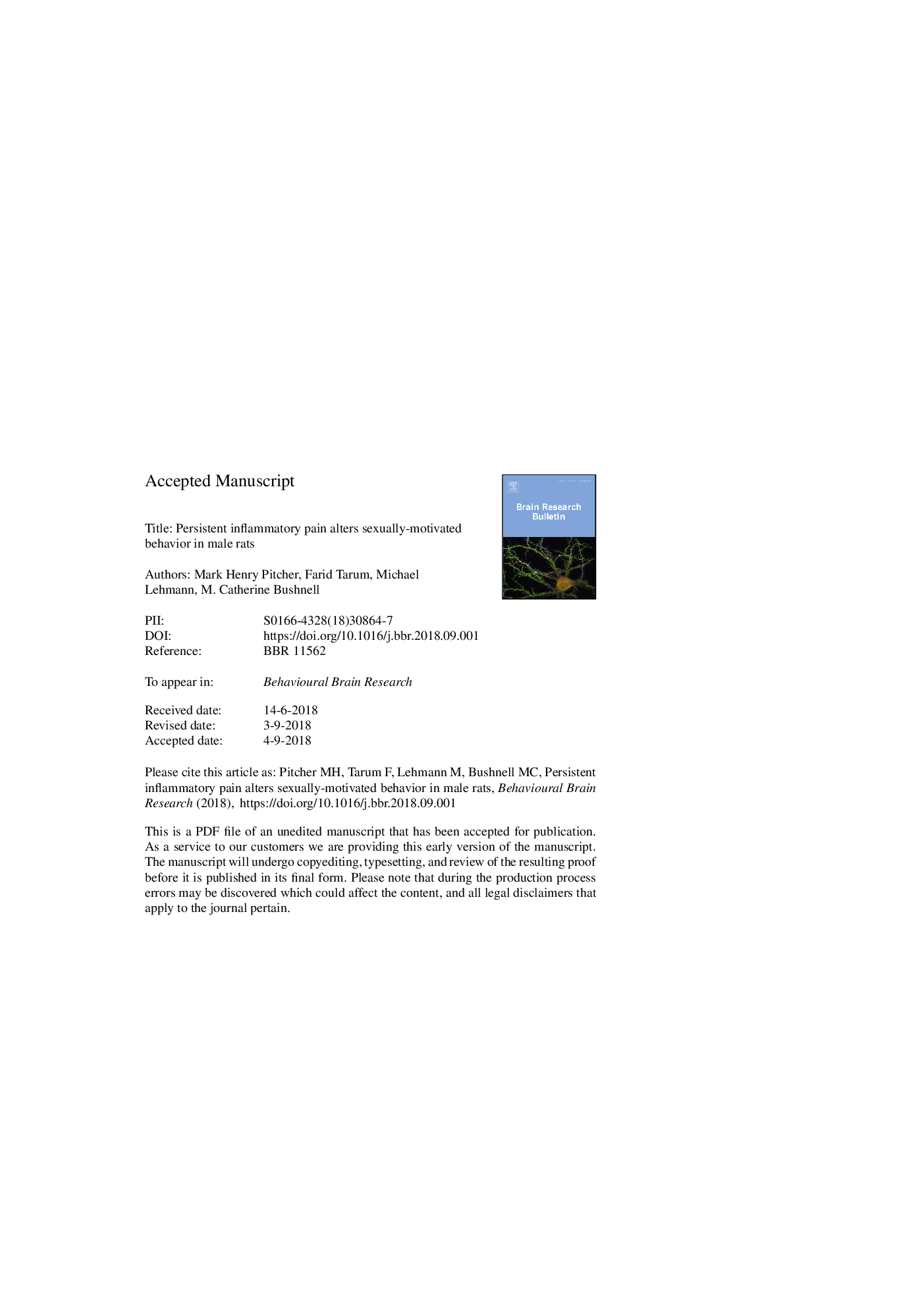| کد مقاله | کد نشریه | سال انتشار | مقاله انگلیسی | نسخه تمام متن |
|---|---|---|---|---|
| 11031778 | 1645886 | 2019 | 29 صفحه PDF | دانلود رایگان |
عنوان انگلیسی مقاله ISI
Persistent inflammatory pain alters sexually-motivated behavior in male rats
ترجمه فارسی عنوان
درد مکرر التهابی باعث تغییر رفتار جنسى در موش صحرایی می شود
دانلود مقاله + سفارش ترجمه
دانلود مقاله ISI انگلیسی
رایگان برای ایرانیان
کلمات کلیدی
موش التهاب درد، جنسیت، فشار،
موضوعات مرتبط
علوم زیستی و بیوفناوری
علم عصب شناسی
علوم اعصاب رفتاری
چکیده انگلیسی
Urine from pro-Åstrus female rodents evokes increased levels of sexually-motivated behaviors in males, including sniffing and scent marking of the urine spot as well as activation of brain reward regions. Stressors such as social defeat can adversely impact urine scent marking behavior in male rodents, an effect that can be mitigated with anti-depressant drugs. Persistent pain is also known to be a potent stressor, producing elevated levels of plasma corticosterone as well as reduced sucrose preference and reduced social interaction. However, the effect of persistent pain on sexually-motivated behavior is unknown. Here, we compared urine scent marking behavior in male rats for up to 3 weeks following intra-articular injection of Complete Freund's Adjuvant (CFA) or sham injection. CFA-injected rats exhibited profound and ongoing deficits in static weight bearing capacity. CFA-induced persistent inflammatory pain increased plasma corticosterone levels and reduced urine scent marking behavior in male rats. Moreover, while the vast majority of injured rats showed decreased urine scent marking preference for the pro-Åstrus female urine spot, male rats with higher baseline scent marking preference also exhibited higher post-injury scent marking preference, more sniffing behavior and lower levels of plasma corticosterone, compared to those with lower baseline scent marking preference. Overall, scent marking behavior may be an ethologically relevant behavioral predictor of persistent pain-induced stress in rats, representing a novel translational approach to understanding chronic pain comorbidities.
ناشر
Database: Elsevier - ScienceDirect (ساینس دایرکت)
Journal: Behavioural Brain Research - Volume 356, 1 January 2019, Pages 380-389
Journal: Behavioural Brain Research - Volume 356, 1 January 2019, Pages 380-389
نویسندگان
Mark Henry Pitcher, Farid Tarum, Michael Lehmann, M. Catherine Bushnell,
